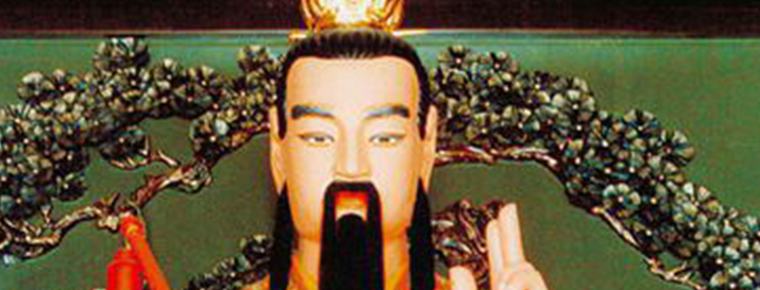The legend of Huang Daxian in Huangchuping
The legend of Huang Daxian in Huangchuping
Huang Chuping's legend is one of the local folklores in Jinhua, Zhejiang Province. It originated in the Eastern Jin Dynasty. The earliest written record was in The Biography of Immortals written by Ge Hong, a famous Taoist theorist in the Eastern Jin Dynasty. Its legend originated from Huang Chuping, a historical figure. Huang Chuping, Jin Chengdiwei and three years (AD 328) were born in Huanglu Village, Lanxi City. On June 7, 2008, the legend of Huang Daxian was approved by the State Council to be included in the second batch of national intangible cultural heritage list.
Historical origin
The legend of Huang Da Xian originated in the Eastern Jin Dynasty. The earliest written record is the biography of immortals written by Ge Hong, a famous Taoist theorist in the Eastern Jin Dynasty. Its legend originated from Huang Chuping, a historical figure. Huang Chuping, Jin Chengdiwei and three years (AD 328) were born in Huanglu Village, Lanxi City. Huang Chuping was smart and intelligent, kind-hearted, diligent and handsome. His brothers and parents died when they were young, and their families were poor. He began to cultivate vegetables diligently. His brother Huang Chuping cut firewood and herd sheep. They depended on each other for their lives. When Huang Chuping was 15 years old, he went up to the goats to herd sheep. When he met Tian Shennong, a Taoist monk, the rain teacher, Chisongzi, who "loved his conscience", took him to the Yinshi Cave of Jinhua Mountain to learn Taoism and practice. Huang Chuping got Taoism and Immortality in Beishan. Later, the stories of "knocking stone into sheep", practicing morality, punishing evil and helping the good, eliminating evil for the people and rewarding good for the people slowly spread among the local people in Zhejiang, leaving many beautiful legends. The legends about Huang Daxian include the legends of Huang Daxian's life story, natural landscape, human landscape, folk customs, local products, and the legends of Huang Daxian's apparition. There are a lot of legends about Huang Daxian in Lanxi, Jinhua, Hong Kong, Macao and Southeast Asia. There are also some sites such as Huang Daxian's former residence, Erxianjing, Jinhua Guan, Chisong Pavilion and Erxianqiao in Lanxi and Jinhua. In Hong Kong, Macao and Southeast Asia, Daxian Taoism is also worshipped, with a vigorous incense and enduring years.
Forms of expression
"The legend of Huang Daxian" has been widely recorded in Taoist scriptures of all dynasties; oral transmission among the people; praise of ancient emperors; reproduction of poetry and paintings by literati of all dynasties; record of historical books, local chronicles and similar books and dictionaries; dissemination of literary and artistic forms such as Quyi, Wuju opera and TV, etc.
Inheritance significance
The legend of Huang Da Xian has a long history, and it has a history of more than 1600 years. It is widely spread not only throughout the country, but also in the United States, Canada, France, Australia and Southeast Asia. It has a high degree of popularity. Its essence is "promoting good and punishing evil, helping the poor and alleviating poverty". It reflects the common pursuit of truth, goodness and beauty, and reflects the demands and aspirations of the people. Cultural forms are rich and varied. There are many palaces, temples and relics at home and abroad in material forms, as well as intangible cultural relics such as ancient and modern literature and art.


-
Changbai Mountains
Changbai Mountains are the birthplace of the Yalu River, Songhua River and Tumen river. It is the birthplace of Chinese Manchu and the sacred mountain of Manchu culture.
Views: 206 Time 2018-10-30 -
Arctic Village Tourism Scenic Area
Arctic Village Tourist Scenic Spot: National AAAAA Class Tourist Spot, the most attractive scenic spot in 2014, and the northernmost scenic spot in China..
Views: 243 Time 2018-12-05 -
Wenchuan Special Tourist Area
Wenchuan Special Tourist Area is a memorial and cultural theme scenic area specially developed after the reconstruction of the Wenchuan Earthquake on May 12, 2008.
Views: 206 Time 2018-12-12 -
Size Dongtian Scenic Spot
The Size Dongtian Scenic Area (formerly known as the Haishan Scenic Spot and Aoshan Scenic Spot) is located in the southern corner of Hainan Province, 40 kilometers west of Sanya City.
Views: 387 Time 2019-01-07 -
Turtle peak Scenic Area
Guifeng Scenic Spot is located in the southwest of Yiyang County, Jiangxi Province, beside 320 National Highway, 311 Highway and Zhejiang-Jiangxi Railway. It is 10 kilometers away from Yiyang County a.
Views: 150 Time 2019-01-13 -
The Old Site of Zaoyuan Revolution
Zaoyuan is located 8 kilometers northwest of Yan'an City. It is a garden-like revolutionary memorial. There are many kinds of flowers, plants and trees growing in it. The scenery is beautiful and the .
Views: 157 Time 2019-03-09 -
Ningbo Zhujin lacquer wood carving
Also known as "Golden Lacquer Wood Carving", it is a traditional Chinese craft. Composition features mainly draw on the advantages of Chinese folk paintings and literati landscape flowers an.
Views: 131 Time 2019-06-08 -
Taining Meilin Opera
During the reign of Qianjia in Qing Dynasty, after Hui Diao was introduced into Taining through Zhejiang and Jiangxi, it merged with local dialect, folk song minor and Taoist music to form Taining Mei.
Views: 154 Time 2019-06-18 -
Xuanbi Production Skills
Xuanbi has a long history. Originated in the Qin Dynasty, it flourished in the Tang and Song Dynasties. At the end of Song Dynasty and the beginning of Yuan Dynasty, there were frequent wars, and the .
Views: 143 Time 2019-07-09 -
China West Normal University
Xihua Normal University is a key university in Sichuan Province. The school was founded in 1946 and began at the National Northeast University during the Anti-Japanese War. At the beginning of the Ant.
Views: 215 Time 2019-08-31 -
Explanation service of Chengdu Giant Panda Base
Chengdu Research Base of giant panda breeding has set up an explanation service station at the entrance to provide high-quality explanation service for tourists who have a better understanding of giant panda knowledge. At present, there are 11 full-time commentators in the.
Views: 383 Time 2020-12-13 -
Guangan scenic spot
By 2018, there are 24 A-level scenic spots in Guang'an City, of which Deng Xiaoping's hometown is a national 5A scenic spot, and six scenic spots, including Huaying Mountain tourist area, Shenlong mountain Ba Ren stone city, baozhensai, Tianyi Vall.
Views: 327 Time 2020-12-19










